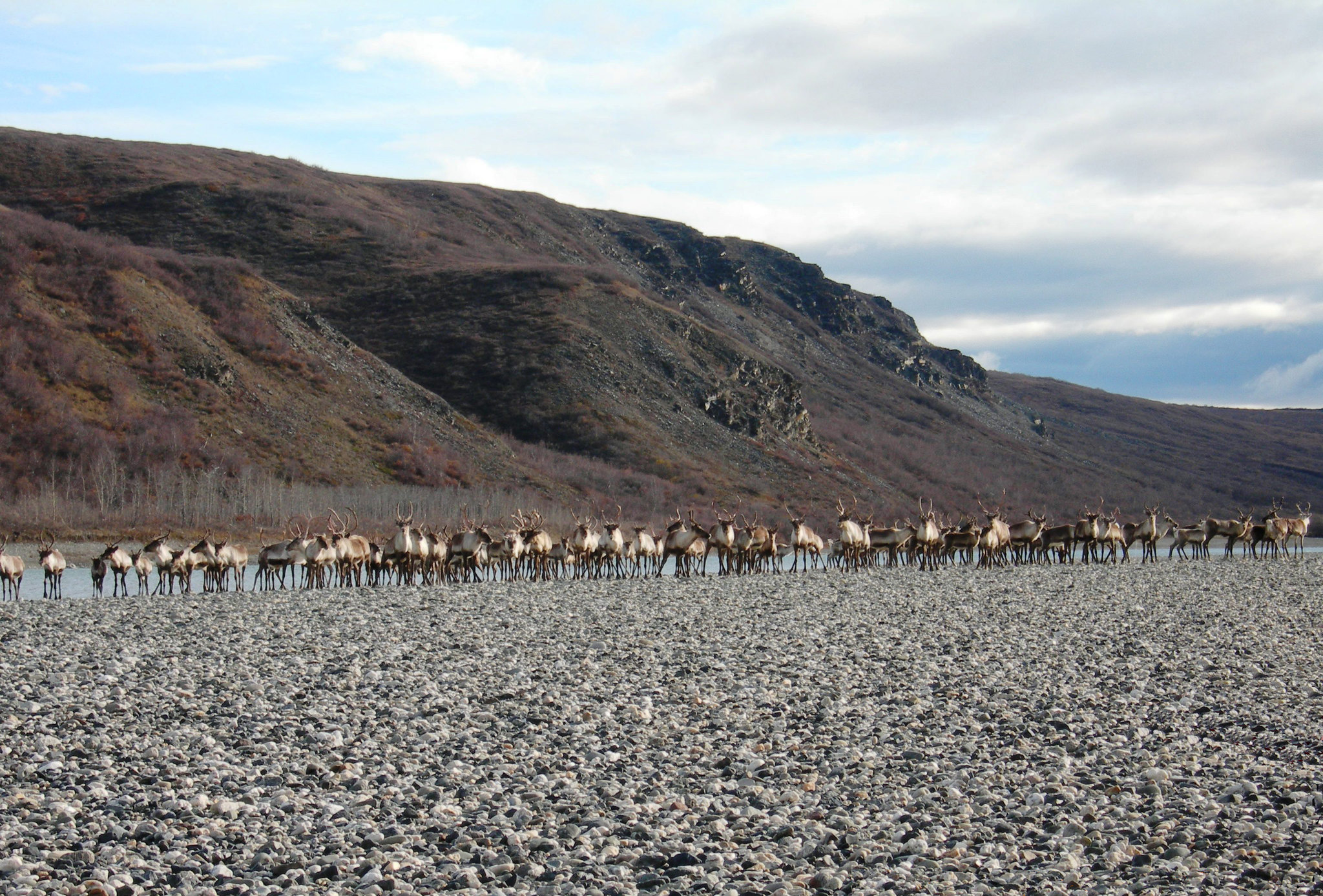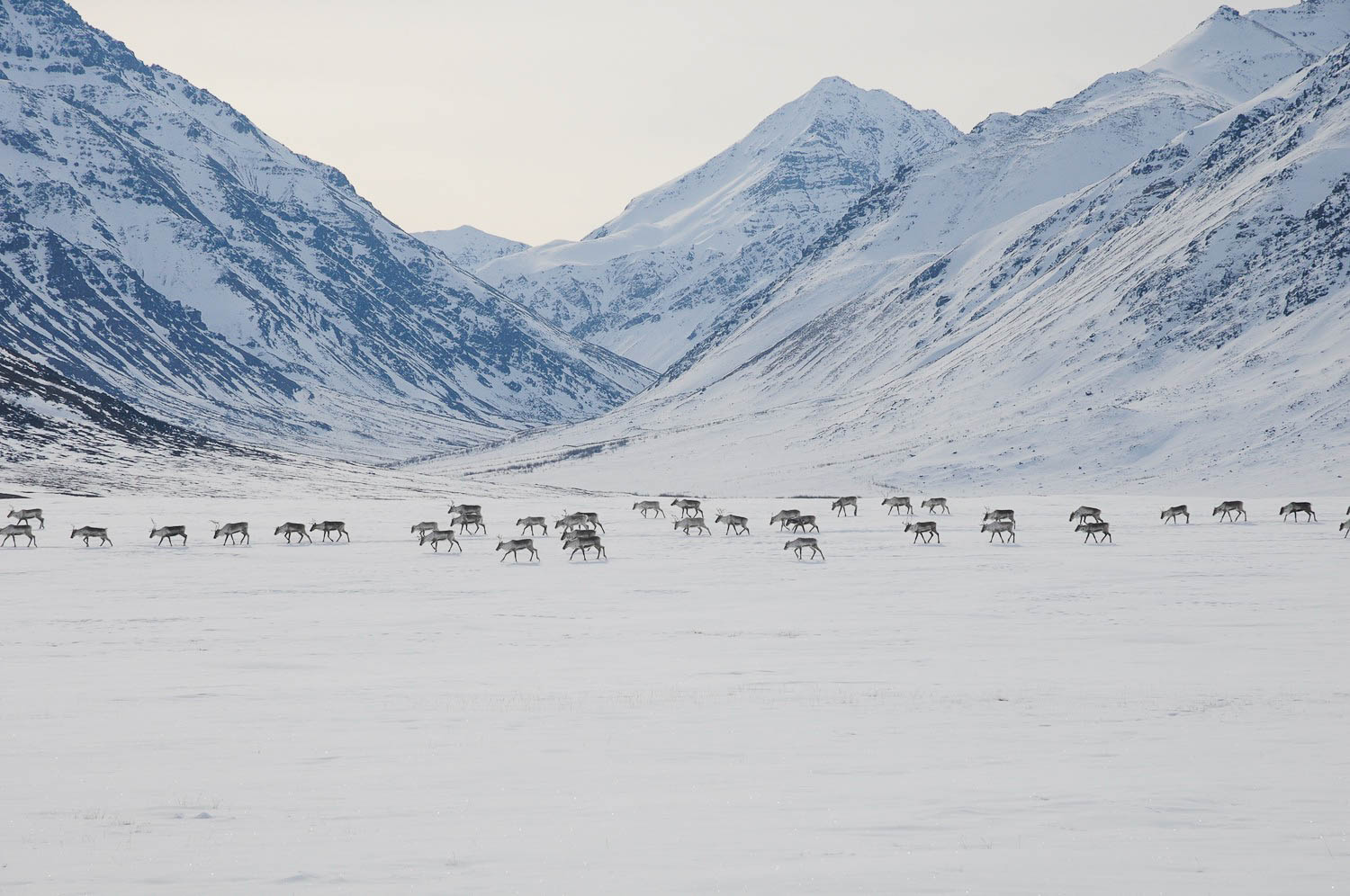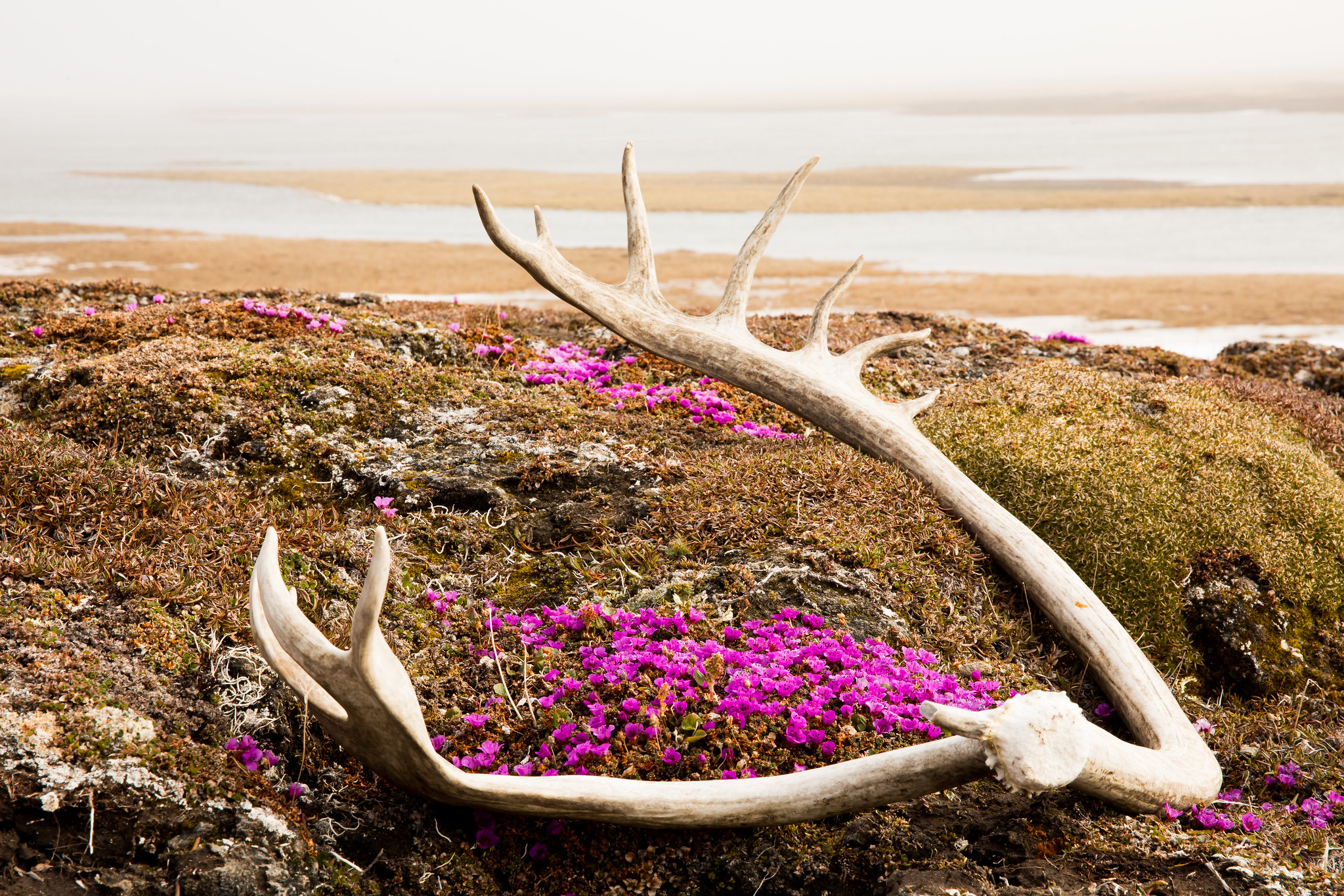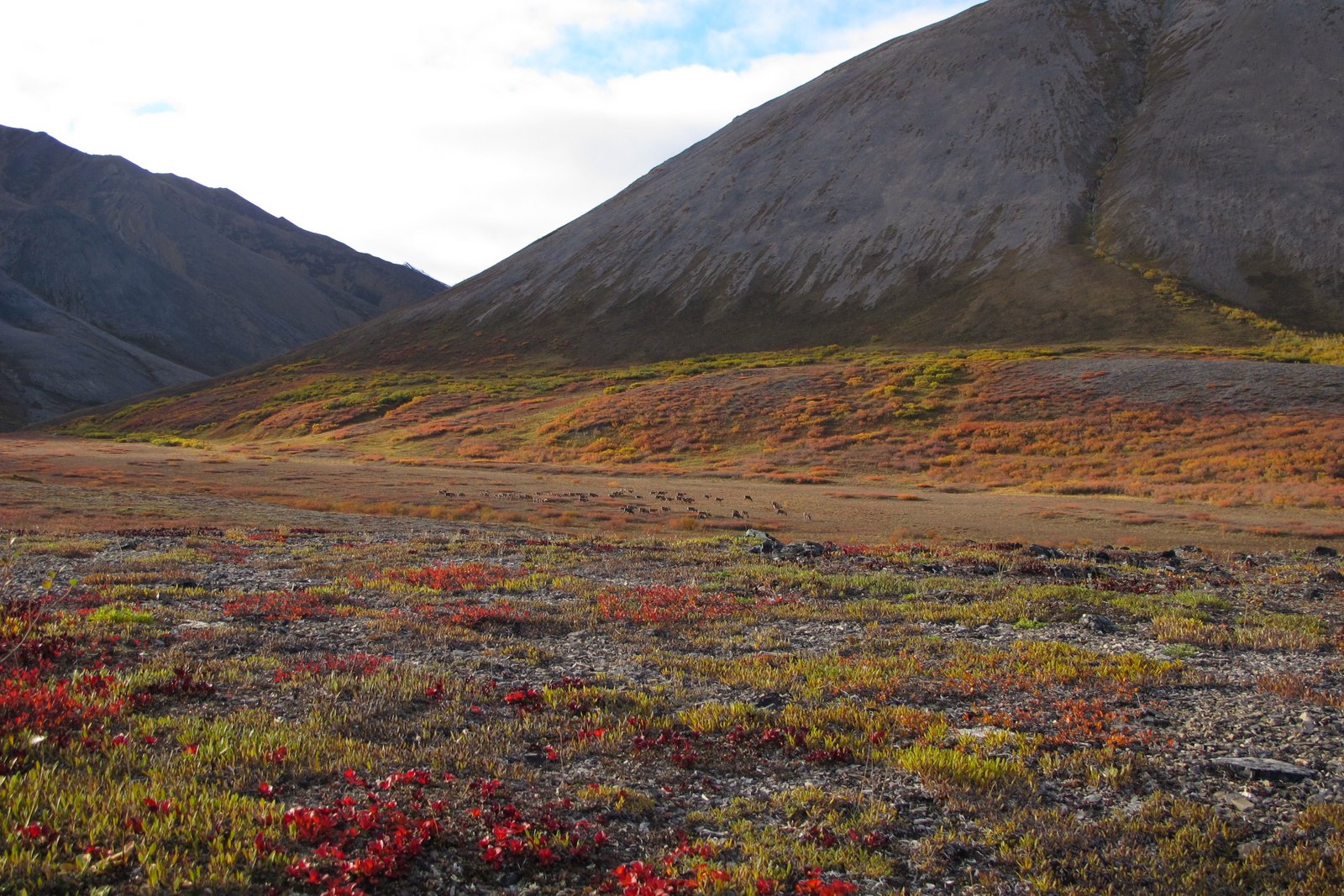Climate change seen as suspected factor in Western Arctic Caribou Herd decline
The herd is shrinking, just like most others across the Arctic. There are signs that warmer temperatures are driving some changes.

One of the biggest caribou herds in North America has taken a nosedive, and climate change is a likely culprit in the population decline.
Alaska’s Western Arctic Caribou Herd population is lower than at any time in over four decades, with numbers put at 164,000, down from a high of nearly 500,000 in 2003, according to the Alaska Department of Fish and Game.
In a meeting room in a downtown Anchorage hotel earlier this month, representatives of Indigenous villages and other organizations dependent on the caribou spent three days discussing the bad news and how to respond to it.
“Right now, our caribou is very, very critical,” said Vernon Cleveland, chairman of the Western Arctic Caribou Herd Working Group, an advisory panel representing people of the region. The herd went from 188,000 in 2021 to 164,000 in the past year, “and it’s going down. We have to do something about it,” he said.
For a short-term response, the working group, which advises policy makers on wildlife management, agreed on recommendations for new cuts in hunting limits, which had already been reduced. There should be more avoidance of cows, as adult female survival was shown to be on an especially bad trend, the group also concluded. Additionally, members of the working group urged better reporting from villages of their hunting experiences and successes. For now, it is estimated that only about a tenth of the region’s hunts are reported to Fish and Game, said Alex Hansen, the department’s Kotzebue-based regional biologist.
But neither hunting nor predation by bears or wolves is implicated in the long-term decline. Instead, several signs point to climate change as having a big effect on the herd.
There is a continued pattern of later fall migration, as recorded by biologists. At the Kobuk River, a key landmark in Gates of the Arctic National Park that the caribou pass in their annual southward trek, the first crossings are about a month later in the year than they were just a decade ago, according to biologists’ information.
“Back in the day, we had animals crossing over in late August,” Kyle Joly, a National Park Service biologist who studies the herd, told the working group. In contrast, in 2020 the first crossing was in early November, the earliest in the record going back to 2010.

Another possible factor is the change to vegetation on which caribou depend. As the climate warms, woody plants are growing farther north, displacing many of the tundra plants that caribou eat. New research that is underway has shown a transformation in part of the western Arctic herd’s range since 1985. The changes are particularly drastic on the Seward Peninsula, in the more southern area of the herd’s range, according to preliminary results of the research, being led by Fairbanks scientist Matthew Macander, who has done similar research in other parts of Alaska.
“Basically, you’re going from great to not-very-good caribou habitat,” Joly told the working group.
Macander’s preliminary findings are consistent with Seward Peninsula residents’ reports of scarce caribou sightings in their region. And they are consistent with data produced by radio tracking of caribou. Of the 33 caribou fitted with radio collars during the fall 2021 migration, none spent the following winter in the Seward Peninsula’s Bering Land Bridge National Monument, according to information presented by Joly to the working group.
Caribou and reindeer herds shrinking across the circumpolar north
Caribou populations are famously volatile, so the Western Arctic herd’s losses could be reversed in the future. Still, around the north, most caribou and wild reindeer populations are on the decline, and many key populations have crashed.
Only two of the 23 herds monitored in an international network — the Porcupine herd that straddles northeastern Alaska and northwestern Canada and the Lena-Olynek herd in Siberia — were at historic highs, according to the 2018 Arctic Report Card issued by the National Oceanic and Atmospheric Administration. Globally, populations declined by about 40% over three generations, according to scientists with the CircumArctic Rangifer Monitoring and Assessment Network. Some of the most stunning declines have been in Arctic Canada, where the George River herd fell from over 800,000 in the 1990s to about 8,000 now and the Bathurst herd fell from 470,000 in the mid-1980s to 6,240 in 2021.
A litany of climate-change impacts are affecting migration of caribou and wild reindeer, according to a recent study led by Joly. They include changes in snow and ice, along with the vegetation transformations being seen in places like the Seward Peninsula. Other impacts of warming are increased rain-on-snow events, which cause hardships for all tundra grazers, and increase in disease-carrying parasites. Permafrost thaw that leads to abrupt changes in lakes, with some draining and others forming, has mixed impacts on caribou migration, according to the study.
Caribou and reindeer around the north are also affected by human development, which fragments habitat, Joly’s research said.

Even for the Western Arctic herd, which has a largely intact habitat, development has made a mark.
The major site of development in the caribou range is northwest Alaska’s Red Dog Mine, one of the world’s biggest producers of zinc. Years of research have found that migrating caribou are affected by the 53-mile road that connects the inland mine with its Chukchi Sea port used to export ore.
For reasons that have yet to be fully understood, a large percentage of migrating caribou refuse to cross the road, altering their migration patterns to avoid it.
The latest piece of evidence of that behavior comes from the past year’s radio tracking. Of the 33 animals collared in the fall of 2021, 10 wound up roaming the area near the Red Dog road. Two of those crossed the road and survived for the full year afterward. Of the eight that did not cross, only five survived for the full year after. It is a tiny sample size, Joly told the working group, but hints at something important. “Sixty-two-and-a-half percent versus 100 percent survival, it’s potentially a big deal.”
Dust deposited by ore-hauling trucks could be affecting caribou and other wildlife, scientists have said.
A newly published study found that tundra plants on either side of the road were thinned out by years of dust deposits. Particles of zinc, lead, cadmium and metal sulfides reduced plant quantity and diversity up to a kilometer away from the road, according to the National Park Service-led study, published in June in the journal PLOS One.
In recent years, the mine’s operator, Teck Resources Ltd., has taken steps to reduce dust from truck traffic along the road. But even with those improvements in dust management, the tundra plants grow so slowly the damage will take a long time to repair, the Park Service-led study said. “Due to the slow growth rates of these nonvascular plants … it is likely that long-term recovery would take many decades after contaminants decrease additionally following mine closure or more intensive fugitive dust control,” the study concluded.
Teck is now proposing building a 10-mile extension to access new deposits on state land that, if developed, promise to significantly lengthen Red Dog’s operating life.
Existing road impacts cited in arguments against Ambler road project
The experience with the Red Dog road contributes to wariness in the region about another mining-related development: the proposed 211-mile road that would cut through the Brooks Range foothills to the isolated Ambler Mining District in northwestern Alaska. The project, which is proposed by the Alaska Industrial Development and Export Authority, is seen as crucial in enabling development of large copper mines.
So does experience with the Dalton Highway, the now-public highway that was originally built as an industrial-use-only supply route along the Trans Alaska Pipeline corridor to the Prudhoe Bay oil field. It was opened to full public access in 1994.

The Ambler project is controversial because of its potential impacts on caribou and other resources. It has been the subject of lawsuits that prompted the Biden administration to reconsider an approval granted in 2020 by the Trump administration. Numerous tribal governments along the proposed route of the Ambler road have passed resolutions in opposition to it.
At the annual working group meeting, members also expressed their misgivings.
“If the road opens up, we’re going to have a lot of people up in that area. No fish, no caribou, no animals, just like the Dalton Highway,” said Cleveland, who is from the Inupiat village of Noorvik. The development represents a threat to traditional Indigenous lifestyles, he said. “We live off the land. We live off tuttu,” he said, using the Inupiaq word for caribou. “We live off caribou, moose, geese, beaver.”
Tom Gray, a working group member from Nome, asked U.S. Bureau of Land Management officials attending the meeting to consider rejecting the current road proposal.
“If this road goes in place, our way of life is going to change,” Gray said. “If it’s hard for our culture and our caribou, you could turn the switch off and say, too bad, figure another way.”
This story was first published by Alaska Beacon and is republished here under a Creative Commons license. You can read the original here.
This article has been fact-checked by Arctic Today and Polar Research and Policy Initiative, with the support of the EMIF managed by the Calouste Gulbenkian Foundation.
Disclaimer: The sole responsibility for any content supported by the European Media and Information Fund lies with the author(s) and it may not necessarily reflect the positions of the EMIF and the Fund Partners, the Calouste Gulbenkian Foundation and the European University Institute.
